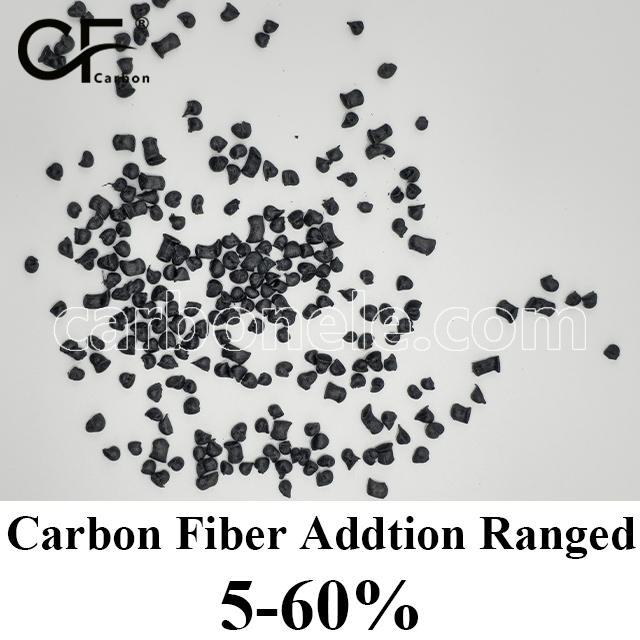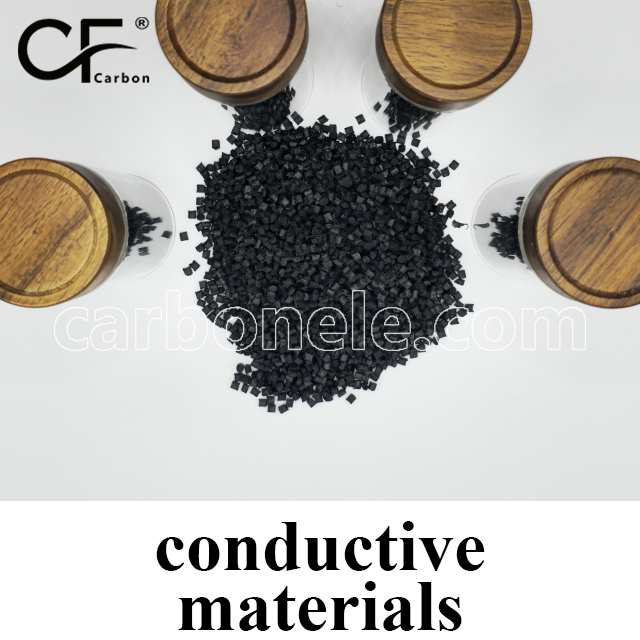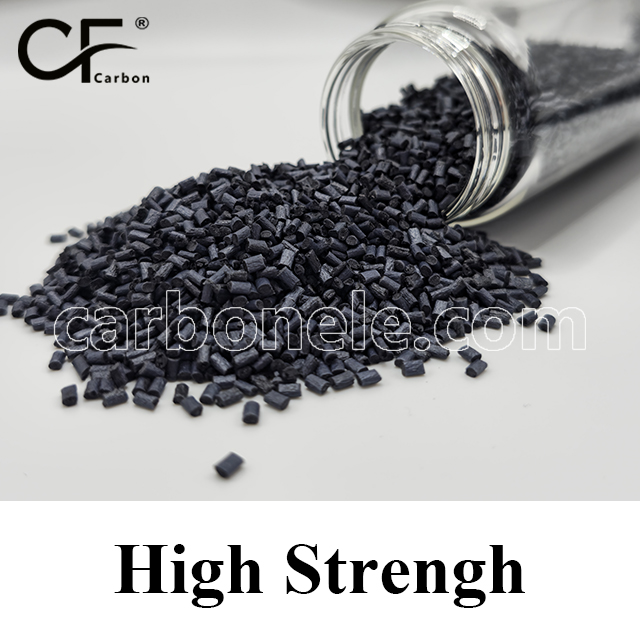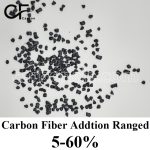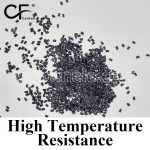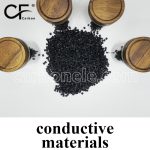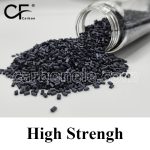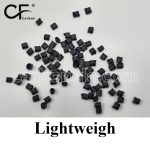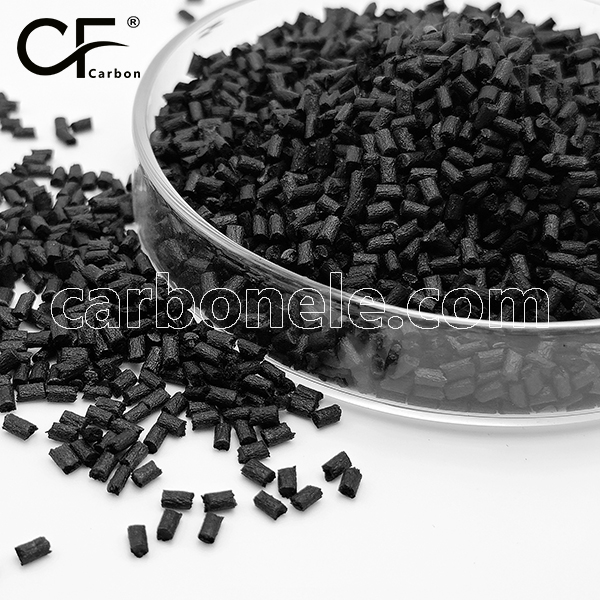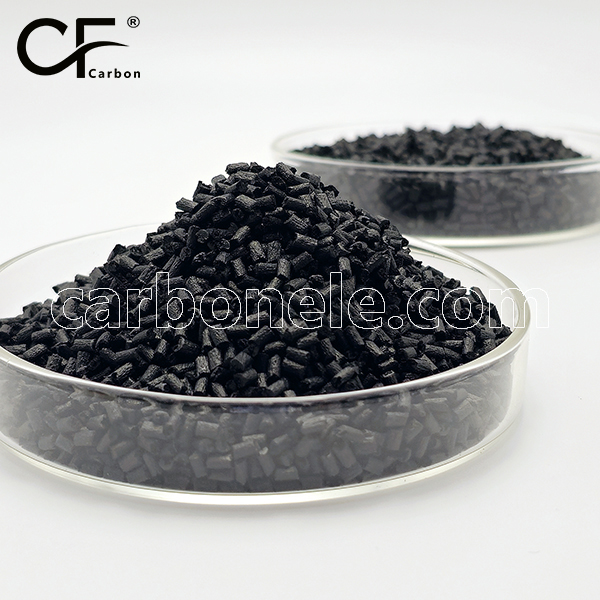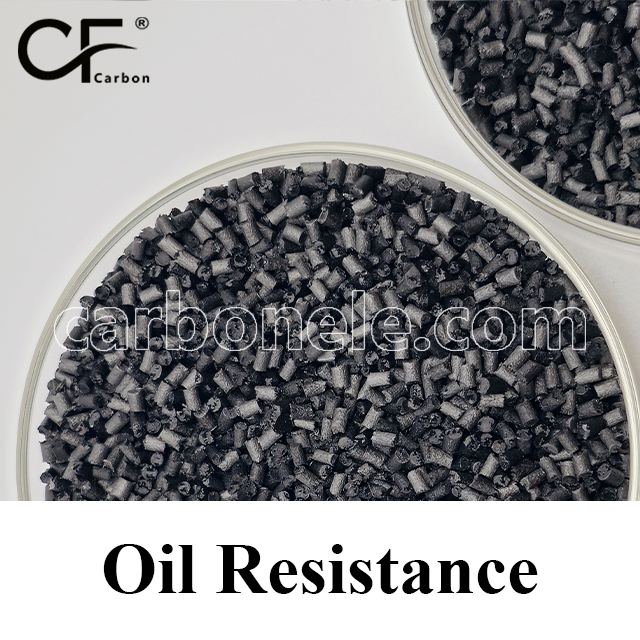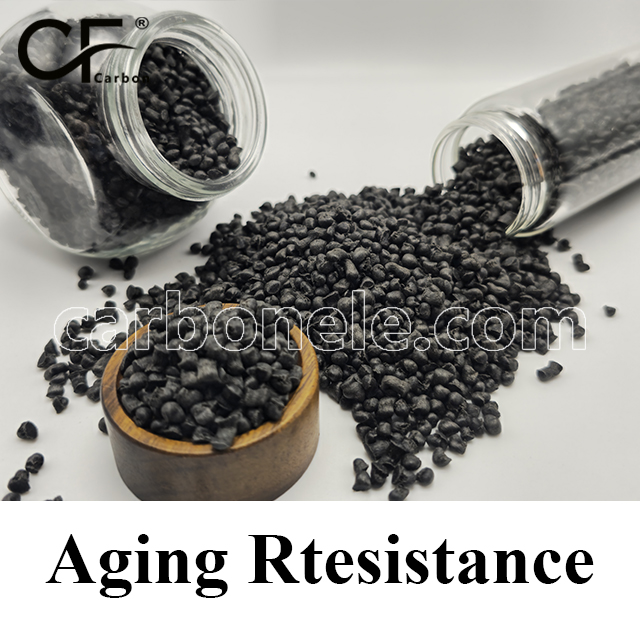PA66-CF50 is a high performance polyamide 66 composite reinforced with 50% carbon fiber, offering exceptional strength, stiffness, and dimensional stability. Engineered for extreme mechanical loads and elevated temperature conditions, it provides outstanding wear resistance, thermal performance, and chemical durability making it an ideal lightweight alternative to metal in demanding structural applications.

Injection molded PA66-CF50
- Model number: PA66-CF-BCA5
- Matrix Resin: Nylon6 6(Polyamide66) (PA66)
- Reinforcing Filler: Carbon fiber
- Appearance: Granules
- Grade: Injection/extrusion grade
- Packaging: 25kgs/bag
PA66-CF50: Maximum Performance Carbon Fiber Reinforced Polyamide 66
PA66-CF50 is an ultra-rigid, top-tier polyamide 66 (PA66) composite reinforced with 50% carbon fiber, delivering maximum mechanical strength, stiffness, and dimensional stability among PA66 based materials. Designed for the most extreme structural applications, PA66-CF50 excels under constant mechanical stress, dynamic load, and elevated thermal conditions. Despite its high reinforcement level, it remains compatible with advanced injection molding and extrusion processes using hardened tooling.
Key Mechanical Properties
Tensile Strength: ≥ 165 MPa
Flexural Strength: ≥ 250 MPa
Notched Impact Strength: ≥ 13 kJ/m²
The 50% carbon fiber content provides the highest achievable reinforcement in a PA66 matrix, enabling reliable metal replacement in ultra high strength, lightweight applications.
Thermal and Chemical Resistance
Heat Deflection Temperature (HDT): Approx. 155°C
Long Term Service Temperature: Up to 140°C
Chemical Resistance: Excellent resistance to oils, greases, fuels, and weak acids; moderate to bases; not compatible with strong acids or oxidizers
PA66-CF50 maintains exceptional mechanical integrity in hot, chemically aggressive environments.
Wear Resistance and Processing
Wear Resistance: Highest among PA66-CF materials
Processing Methods: Injection molding, extrusion
Processing Notes: High filler abrasiveness requires hardened screws, barrels, and mold components; mold flow and fiber orientation must be optimized for structural integrity
Environmental Adaptability
Water Absorption: Extremely low compared to standard PA66
Dimensional Stability: Outstanding across wide temperature and humidity ranges
PA66-CF50 ensures long term precision and stability in variable and harsh environments.
Typical Applications
PA66-CF50 is developed for maximum strength and stiffness in advanced engineering designs, including:
Automotive: Chassis mounts, powertrain carriers, structural supports
Industrial Equipment: Load bearing machine components, robotic joints, mechanical arms
Aerospace & Defense: Lightweight structural elements exposed to vibration and load
Mechanical Hardware: Precision bushings, high strength gears, fatigue resistant linkages
Sustainability and Design Flexibility
PA66-CF50 offers substantial lightweighting potential by replacing metal in structural parts, reducing weight while maintaining or even improving performance. Its high modulus and strength enable part consolidation and improved energy efficiency, supporting sustainability goals in automotive, industrial, and aerospace sectors.
PA66-CF50 Performance Overview
| Property | Value/Description |
|---|---|
| Carbon Fiber Content | 50% |
| Tensile Strength | ≥ 165 MPa |
| Flexural Strength | ≥ 250 MPa |
| Notched Impact Strength | ≥ 13 kJ/m² |
| HDT | Approx. 155°C |
| Long Term Service Temp | Up to 140°C |
| Chemical Resistance | Excellent, except strong acids/oxidizers |
| Water Absorption | Extremely low compared to standard PA66 |
| Processing Methods | Injection molding, extrusion |
| Wear Resistance | Highest in the PA66-CF range |
If you want to get more information about PA66-CF50, you can vist our Youtube.
Strength between PA66 and PA66-CF
Compared to unreinforced PA66, PA66-CF (carbon fiber reinforced) offers significantly higher strength and stiffness. The addition of carbon fiber increases tensile and flexural strength, enhances dimensional stability, and reduces deformation under load. While standard PA66 provides good toughness and impact resistance, PA66-CF materials are better suited for structural and high-stress applications where superior mechanical performance is required.
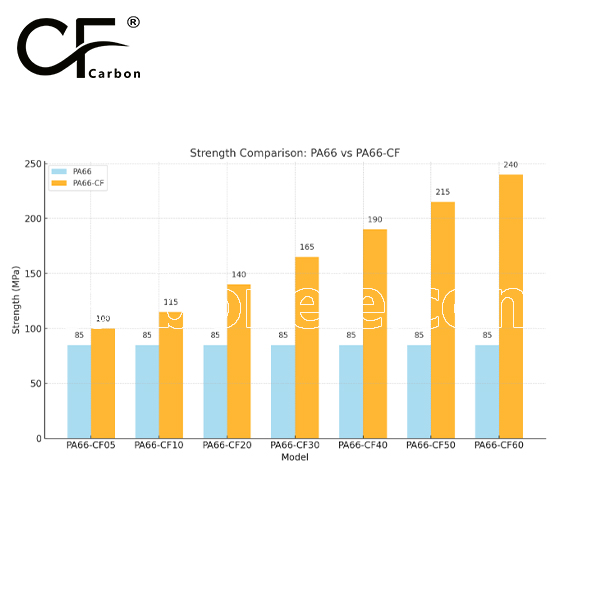
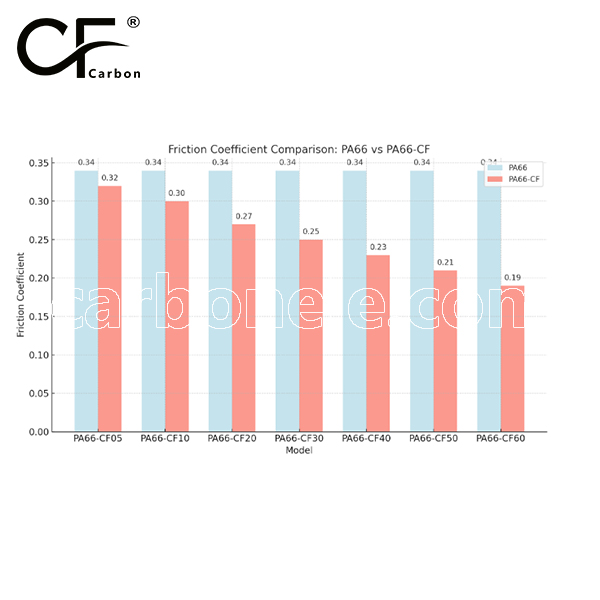

Frequently Asked Questions
Carbon (Xiamen) New Material Co., Ltd. aims to provide buyers with "one-stop" worry-free high-quality services. Here you can find all information about carbon fiber engineering plastics. If you still have questions, please send us an email for consultation!
-
How can I contact the manufacturer of a product that interests me?
When you find a product you are interested in, you can contact the manufacturer directly by sending an email and we will get back to you as soon as possible.
-
How do I find the products that interest me?
All you need to do is enter the keyword, product name in the search window and press the Enter key on your keyboard. Your search results page will then be displayed. You can also search within the product category pages on the home page. Each category is divided into subcategories, allowing you to refine your search and find products that interest you.
-
Where will I find a buying guide?
Please contact our after-sales service directly and we will provide you with a comprehensive operating guide.
-
What are CF Reinforced Thermoplastic Composites?
CF Reinforced Thermoplastic Composites are materials where carbon fibers are incorporated into a thermoplastic matrix. They combine the strength and stiffness of carbon fibers with the processability and recyclability of thermoplastics. For instance, they are used in automotive parts like bumper beams.
-
What are the benefits of CF Reinforced Thermoplastic Composites over traditional composites?
The key benefits include faster production cycles, easier recyclability, and better impact resistance. They also offer design flexibility. An example is in the manufacturing of consumer electronics casings where complex shapes can be achieved more easily.
-
How are CF Reinforced Thermoplastic Composites processed?
Common processing methods include injection molding, extrusion, and compression molding. Injection molding is widely used for mass production. For example, in the production of small components for the medical industry.
-
What industries use CF Reinforced Thermoplastic Composites?
They are utilized in aerospace, automotive, medical, and sports equipment industries. In aerospace, they can be found in interior components. In the medical field, they might be used in prosthetics.
-
How does the carbon fiber content affect the properties of the composites?
Higher carbon fiber content generally leads to increased strength and stiffness but may reduce ductility. A moderate content is often balanced for specific applications. For example, a higher content might be preferred in structural parts of a race car.
-
What are the challenges in using CF Reinforced Thermoplastic Composites?
Challenges include higher material costs, complex processing equipment requirements, and ensuring uniform fiber dispersion. Issues with adhesion between the fibers and the matrix can also arise. An example is in achieving consistent quality in large-scale production.








